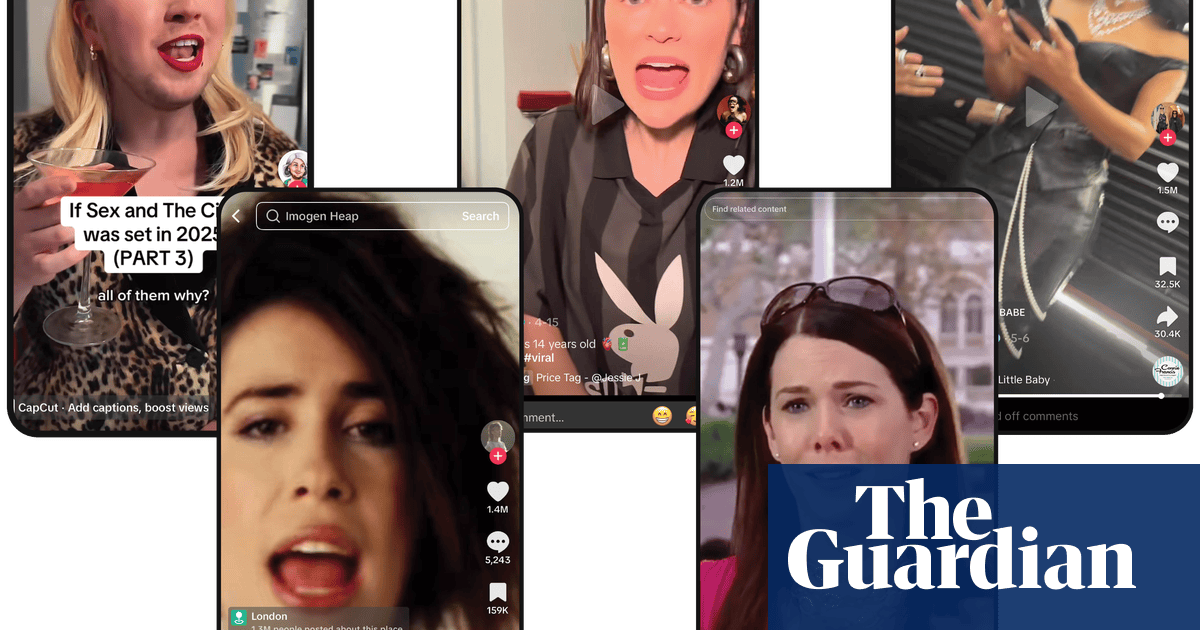It is the social media platform that likes to see itself as being on the cutting edge of the latest youth culture and setting the latest trends for others to follow. But across music, television and observations on British daily life, something more familiar is trending onTikTok– a new generation of nostalgia.
Music and TV from the 2000s are being rediscovered by gen X and ageing millennials, as well as being discovered for the first time by gen Z. Use of the #noughties nostalgia hashtag is up 36% on last year across entertainment content – while the era is also enjoying a revival in fashion.
Sex and the City, which initially ran from 1999 to 2004, has been the subject of 108,000 videos on the site, with a doubling in videos over the past year. Gossip Girl, which ran from 2007 to 2012, has been the subject of 1.2m videos. Gilmore Girls, which ran from 2000 to 2007, has 1m associated videos. Vampire Diaries, which aired for eight years until 2017, is one of the most discussed, with 2m videos so far.
There has also been a revival in attention for the UK show Skins, a drama about a group of teenagers from Bristol, which first aired on E4 in 2007. It has 1.6m posts globally to date.
“We’re seeing a really big fondness for 90s and noughties across all key content categories,” said Lily Hall, a programs and insights manager at TikTok UK, Ireland and Nordics. “It obviously remains massive in fashion and beauty, and we’re continuously seeing older music, TV shows and films resurface as users are finding that comfort and escapism in the past.
“Older series are currently amongst the most popular on the platform. You’ve got this new generation rediscovering older TV shows, and an older generation resharing their old favourites.”
TikTok’s penchant for “Britcore” content has crossed over with the demand for 2000s nostalgia, with creators sharing videos on itsfashion and lifestyle,childhood toysand stores such as Toys R Us, anddiscontinued snackslike pink and white mice sweets and Cadbury’s Animal Crackers.
Crime drama has also been having a bigger impact, with a 70% increase in associated videos over the past 12 months.
The runaway success ofAdolescenceled to content examining how it was made in one shot. There have been 76,000 videos created with the programme’s hashtag. Other creators have been rediscovering the likes of Code of Silence and Kin.
In music, the wave of nostalgia has included the rediscovery of tracks such asHeadlock by Imogen Heap, released in 2005, andPrice Tag by Jessie J, released in 2011.
But the most surprising throwback success is a song that was recorded 64 years ago and was only deemed good enough at the time to make a B side. Yet Pretty Little Baby, by Connie Francis, has been adopted by a new generation and made waves on the platform. Such has been the impact that Francis, 87, has joined TikTok herself.
Sign up toThe Guide
Get our weekly pop culture email, free in your inbox every Friday
after newsletter promotion
The track has gone viral on the site and has been the subject of more than 20m video creations. It comes 65 years after Francis became the first woman to top the Billboard Hot 100 chart. TikTok said the song had been used as the soundtrack to wholesome content around the family and pets.
Among the celebrities to have joined in with the trend areNara Smith,Kylie Jenner, andKim Kardashian.
“This is a reminder that the TikTok community doesn’t care about genre or age,” said Sheema Siddiq, an artists partnerships manager at TikTok. “It doesn’t matter if the song was released a month ago or decades ago. What matters is whether the community can be creative with it.”
